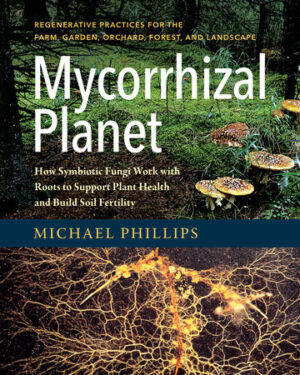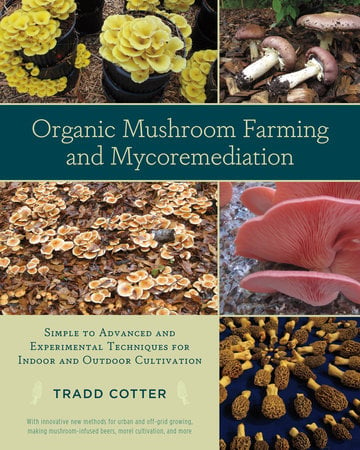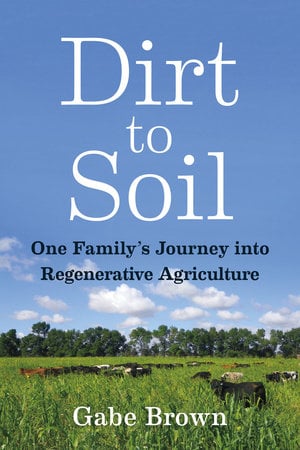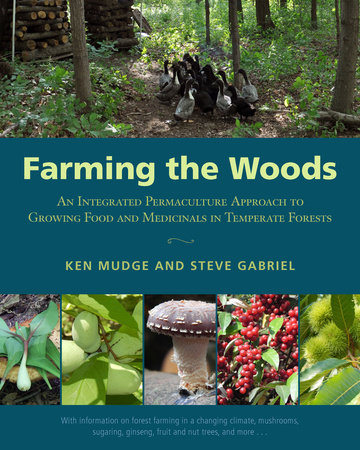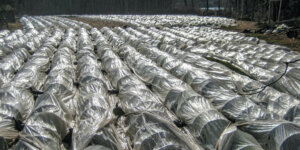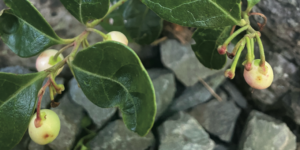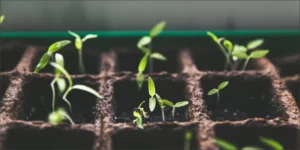Focusing on Soil Remediation with Fungi
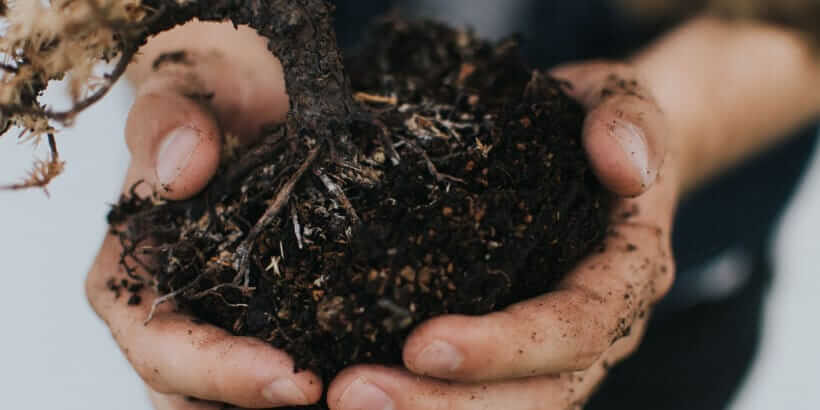
Nature does what needs to be done if we let her. We can do two main things to assist her along the way and promote soil remediation.
One: Promote healthy plant metabolism as the guiding paradigm in growing anything. And two: Think and think again about ways to least disturb the soil ecosystem. Our overarching goal needs to be to amplify mycelial connection everywhere.
The fungi and the plants will sing this soil redemption song for us. As the fungi and the plants always have.
The following excerpt is from Mycorrhizal Planet by Michael Phillips. It has been adapted for the web.
Soil Remediation
The long-term storage of carbon in the soil depends on the ability of healthy soil to form aggregates. That’s achieved by mycorrhizal fungi and mycorrhizal plants. Hyphae and roots, joined as one. Each and every mycorrhiza pulsating with nutrient flow, making our lives possible. Tomorrow can be redeemed by honoring this fundamental earth pact.
We talked about how the planetary membrane of fungi protects life’s sacred trust at the start of all this. That pattern, beginning with the plant cell membrane, gets repeated again and again in the physical world, including with our own body when considered in its proper context, as a community of organisms. Cohesion lies in the team approach, whether we are talking about plant ecosystems or colonized leaf surfaces or rhizosphere dynamics . . . or indeed ourselves.
This is a core teaching of the fungi. Hypha joins with hypha to form a mycelium that in turn brings a multitude of plants into a support network. Other mycelia bring other networks on board. Passage plants and bridge trees link these in turn, and so we arrive at the overarching common mycorrhizal network. Balanced nutrition and green immune function follow from there. Individuals ebb and flow, but the beat that sustains never falters.
Interestingly, some researchers choose to speak about all this in terms of warfare and competition.
That mycorrhizal fungi are only beneficial up to a point. That these fungi can just as well cross the line and start taking more than will be offered back to the plant host in return. This alone changes the relationship to being parasitic in such minds. The symbiosis becomes selfishness. Even the word host implies a certain judgment assigned to what’s taking place in the biological ego realm. In a similar fashion, many agronomists see plants as being in competition for moisture and nutrients with other plants . . . and so recommend applying herbicide to the surrounding ground in order to secure the niche of the one preferred. Truffle growers rightfully 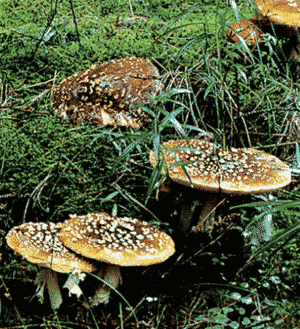 understand that other ectomycorrhizal fungi can claim tree roots for their own, thus diminishing the place at the head of the table for the truffle fungi. Yet all this is a human perspective conjured in part by the way we see ourselves. Fungi are not at “war” with other fungi. Plant communities don’t evolve on the basis of superheroes defeating villains with death ray guns.
understand that other ectomycorrhizal fungi can claim tree roots for their own, thus diminishing the place at the head of the table for the truffle fungi. Yet all this is a human perspective conjured in part by the way we see ourselves. Fungi are not at “war” with other fungi. Plant communities don’t evolve on the basis of superheroes defeating villains with death ray guns.
The underlying intelligence of the underground economy lies in collectively meeting the needs of the whole. We know as herbalists that the organosulfur compounds in garlic can help lower high blood pressure and that these same compounds in another body system can improve sluggish circulation. By the same token, fatty acids in holistic sprays work to deter fungal pathogens while simultaneously supporting beneficial organisms, including mycorrhizal fungi. Paradox dwells in the fact that colonized plants send significant carbon sugars to roots to fuel the soil engine—while those same plants have even more carbon for healthy growth thanks to higher rates of photosynthesis than those found in noncolonized plants. Yet what dichotomy!
We’ve spoken here of enzyme synthesis in plants as good for the individual and bidirectional streaming of protoplasm by the mycorrhizal fungi as benefiting the entire plant community. These are sides of the same coin, in truth. The intelligent plant diet requires that “someone” be discerning, and no one is better positioned than mycorrhizal fungi to sort out who’s next in line when it comes to delivery of essential nutrients. An individual plant that takes in a surplus of nitrogen, as so readily happens in NPK-driven agriculture, becomes far more susceptible to disease.
The fungal network tempers excess by divvying up nutrient distribution across a wider profile of plants. Balanced availability of trace mineral cofactors in turn drives molecular synthesis. Proteins are secured within and attached to the phospholipid bilayer. Wherever the leaf. This in turn notches up metabolism in the plant in question, making it less palatable to pests and biotrophic fungal pathogens. Yet when a single caterpillar takes that first chomp—or that errant disease spore lands from the sky and germinates—other plants are soon put on alert to prepare. You want health assurance? Have I got an assurance policy for you, my friend.
Mycorrhizal fungi are in the midst of every deal made for trace minerals and other nutrients. Every signal sent via the hyphal internet involves fungal messaging. The mere presence of fungi within the root triggers a chemical response that in turn induces resistance mechanisms throughout the plant. Plants in league with arbuscular-type fungi are constantly being gifted with biological reserves in lipid form to further robust metabolism as a result of hyphal lysis taking place within the root cortex. Even solid granite yields to the mineral weathering of fungal reach.
Of all the ties that bind, mycorrhizal fungi have secured a forever place in keeping this green planet alive and on an even keel. How sweet it is that plants hooked up with these fungi back in the day!
Civilizations have come and gone precisely for overlooking the importance of healthy soil.
Aldo Leopold reminded us that land health is “the capacity of the land for self-renewal.” This current moment in human history only seems to be the more calamitous because the consequences of disrespecting natural ecosystems have taken on global proportions. We rightfully discuss carbon-this and methane-that in making the case to end the use of fossil fuels as soon as possible. The other part of addressing severe climate change is to work with soil fungi to restore healthy soil function.
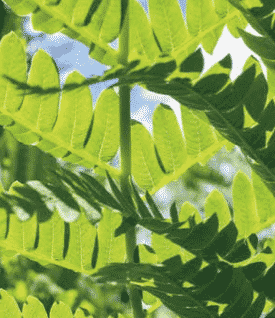
Green vibrancy goes hand in hand with mycorrhizal connection.
One core aspect of the nondisturbance principle is surely doable: Don’t Screw Up. We’ve walked through a number of such scenarios, but the one to really drive home here at the finish is to keep the ground in cover. Soils wash or blow away without plant biomass on top. Mycorrhizal fungi carry forward best when living plant partners are on the scene.
Bare soil means no photosynthesis and very little biological activity. What little soil carbon has been brought about by a short-lived annual crop in the growing season soon oxidizes and goes airborne without mycorrhizae to hold down the fort. In this situation, as Christine Jones has pointed out countless times, everything becomes dysfunctional. Soil aggregates deteriorate. Water-holding capacity is reduced. Nutrients say “bye-bye.”
A Polish soil scientist named Sir Paul Edmund Strzelicki visited southeast Australia between 1839 and 1843. He collected 41 soil samples from farms there in order to figure out what makes certain systems more productive than others. The baseline chosen was soil organic matter. The top ten samples showed 11–37 percent soil organic matter; the bottom ten showed 2–5 percent. An eighteenfold difference in water-holding capacity was noted from one end of this continuum to the other. Today all soils in Australia fall in the 2–5 percent range.
We are talking about some mind-blowing numbers from the not-so-distant past. The same scenario undoubtedly applies across the North American continent (despite our apparent lack of visiting soil scientists from Poland), as many soils today fall into this same low range. Such is the result of centuries of misguided agriculture. More to the point, we can now begin to appreciate what’s possible.
Humanity needs to grasp how to make soil this good again and do so quickly.
Lucky for us, the ones with such profound knowledge have stayed the course. No one knew about mycorrhizal fungi in the beginning of this Homo sapiens push toward depletion. Few marveled at the elegance of the soil aggregate and its unequivocal tie to planetary stability. The whole carbon-farming framework we urgently need today would have received at best an empty stare in return at the time the first plow turned the very first furrow. Perhaps it would help if we got a bit more exacting about how to think about carbon.
Carbon sequestration is a hot topic, and for good reason. More CO2 in the sky explains in large part why our planet is warming, and dangerously so. Proposed solutions range from yet-to-be-discovered technology to government policies that put caps on carbon emissions. Requiring corporate users of fossil fuels to offset the cost of inevitable emissions by paying for green investment is another idea. Averting planetary disaster will require a major reduction in the burning of oil, natural gas, and coal. A society-wide carbon tax may well be the most straightforward strategy for motivating people to reduce greenhouse gas emissions.
Reducing the source of the problem, however, doesn’t go far enough.
The hubbub around the recent climate treaty signed in Paris (whoop-dee-doo) introduced more of us to positive approaches for dealing with increasing carbon levels in our atmosphere. This brings the conversation back around to the role of mycorrhizae in building long-lasting soil. Had only the negotiators taken notice! Earlier that same year, France’s Ministry of Agriculture, Agrifood, and Forestry introduced a proposal called the “4 per 1,000” initiative.
This voluntary action plan focuses entirely on improving organic matter content and promoting carbon sequestration in soil through a transition to agroecology, agroforestry, and conservation management. The idea being that a “0.4 percent annual growth rate of the soil carbon stock would make it possible to stop the present increase in atmospheric CO2.” Emerging soil science estimates confirm that “we” could store 50–75 percent of current global carbon emissions in the soil. Aside from the arrogance in that last statement, reasonable people are at last talking about implementing some right-on non-disturbance techniques in agriculture and forestry.
How about that, say the fungi, they speak-a my language.
Well, sort of. The notion that carbon simply needs to be locked away in the soil is where we come up short. Let us not forget the humic mysteries. Smaller and smaller bits of microbial matter protected from further degradation are the source of stable carbon stored in the humus fraction of the soil. Yet it is the flow of carbon through soils—rather than its absolute sequestration—that holds the keys to healthy soil function and sustainable land use systems. Gaia lives and breathes just as we do. The processes of photosynthesis, respiration, assimilation, mineralization, and oxidation are dynamic and ongoing.
Mycorrhizal fungi use carbon to trade with bacteria for nutrient acquisition and to further hyphal growth. Carbon provided by plants sustains the soil food web. These same cycles hold sway in the oceans, where phytoplankton produce half of the world’s oxygen and sustain the aquatic food web. The planetary carbon cycle requires the movement of carbon to keep life engaged.
That portion of carbon kept in reserve in the form of a multitude of decomposing microbes has a breath of its own as well. Such carbon sinks as found in humus and the ocean floor are vital to maintaining planetary equilibrium yet are equally dynamic, only now moving along on a far slower conveyor of time. And here’s where we as humans come closer to our actual role in these states of affairs. Effective stewardship of the land involves keeping the organic matter flowing, as it’s only through actively recirculating carbon that we honor fungal ways and plant wisdom. This means growing healthy crops, grazing pastures rationally, and managing forests with respect for the generations to come.
We build our lives on ecology when working in Nature’s economy.
The self-seeking mind-set where accumulation and consumption rule the day must be put behind us. Making such a shift requires that we see the world as sacred and valuable in its own right. Awareness of ecological fundamentals is absolutely critical. We became disassociated from all that truly sustains us when fossil fuels allowed us to forget natural systems.
Now we have little choice but to revive those meaningful connections to the land and every other species with which we share this earth. The question is, can enough of us change in order to save the day? As Wes Jackson puts it, “I suspect that fully living within our finite ecosphere into the foreseeable future will be the most formidable challenge our species ever has or will ever face.”
Restoration of the vast areas of land that have been degraded, abandoned, and overrun by weeds offers dramatic opportunities to increase both biomass and soil carbon.
Setting our sights on turning such inoperable land into economically and biologically productive carbon sinks benefits everyone. The semiarid Loess Plateau grassland soils of northern China, long poorly farmed but lately undergoing transformation back to shrubland and native grasses, has seen soil organic matter content double from around 3 percent after abandonment to about 6 percent in twenty to thirty years when allowed to recover. Holistic planned grazing ups this ante yet again by actively managing livestock to heal the land. Policies that would reinvigorate the 3.5 billion acres of grasslands in the world, many of which are degraded, need to be put at the head of the line, right up there with reforestation.
Such efforts are all about restoring photosynthetic activity so mycorrhizal fungi receive carbon. The fungi in turn utilize that carbon to build soil structure, which increases soil quality. It’s the best way to circulate and thus store carbon, and it’s the only arrangement big enough to offset all the fossil fuels burned over the last hundred years.
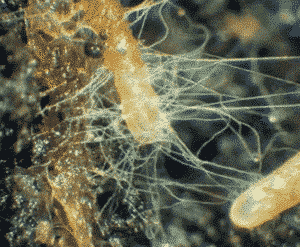
The fungus root stands revealed. Now it is up to each of us to care about mycorrhizae in the ecosystems we call home. Photo by Paula Flynn, Iowa State University.
The great news is that there is enough land out there in need of regeneration for everyone to do something. All approaches have merit, adding in agroforestry and perennial cropping as well. Rich choices. Real opportunity. These are indeed exhilarating times to be alive. Capitalism’s decline is a necessary adjustment. Worry not, for we still have what came before, and that’s the natural world and each other.
Traditional cultures had an ethical relationship with Nature that worked. The same can be true again. We are not at the end of a rope, as it’s so easy to think. Humanity can yet choose to turn direction. The moment has come to leap into action with glad hearts. The seeds are germinating. The fungi are willing. And we must be, too.
Perhaps the real gift of the fungi and the plants isn’t the “carbon solution” as much as it is showing us a way forward.
That to cooperate is to find bounty for all involved. Fungal networking doesn’t overlook the youngest or the least in the crowd. Older stumps are provided for as well. Most telling is that of one life giving to the next. It is written (in the book of Matthew) for I was hungry and you gave me something to eat, I was thirsty and you gave me something to drink. This testament, which speaks so passionately to the human heart, goes further than our species alone. Do we have ears to hear what mycorrhizae are telling us? Do we have eyes to see what tiny critters do on behalf of the whole? Beneath our feet is the teaching and the blessing.
My take on “a future and a hope” lies in tangible things my family and I can do on land we love. Each of us must embrace the good life and return to simpler ways. This connection to being, to the land, and to each other is to be celebrated. Rejoicing in this creation keeps us willing. Right now, as I write these very words, the birds are singing to greet the new day. The morning sky has begun to shimmer with all the possibility life offers anew at every turn. Ecological restoration begins when we honor the fungal component of the soil. We can do this. Generations to come need us to act now.
Nature does what needs to be done if we let her. Many people will step up to the task once provided with accurate facts and inspired by possibility. It really comes down to two simple concepts to take forward. One: Promote healthy plant metabolism as the guiding paradigm in growing anything. And two: Think and think again about ways to least disturb the soil ecosystem. Our overarching goal needs to be to amplify mycelial connection everywhere.
The fungi and the plants will sing this soil redemption song for us. As the fungi and the plants always have.
Recommended Reads
Recent Articles
Want to grow year-round, but a greenhouse feels like a big investment? When it comes to cost and flexibility, low tunnels are the all-around winners.
Read MoreWintergreen is the stunning evergreen groundcover that’s a game-changer for your garden! It’s cherished for its aromatic leaves, vibrant fall color & bright berries.
Read MoreGrow winter carrots for a sweeter & more flavorful harvest! Ditch the bland, store-bought carrots this winter! Grow your own winter carrots for a sweeter and more flavorful twist 🥕🥕
Read MoreThe fig tree is more than just a fruit-bearing wonder. The complex nature of these trees is beyond fascinating. They are the ultimate ecosystem superheroes!
Read MoreSearching for the perfect book to give the homesteader in your life? We’ve got your go-to books for anyone interested in organic growing, permaculture, soil health, year-round growing & more! What’s their next great read?
Read More

